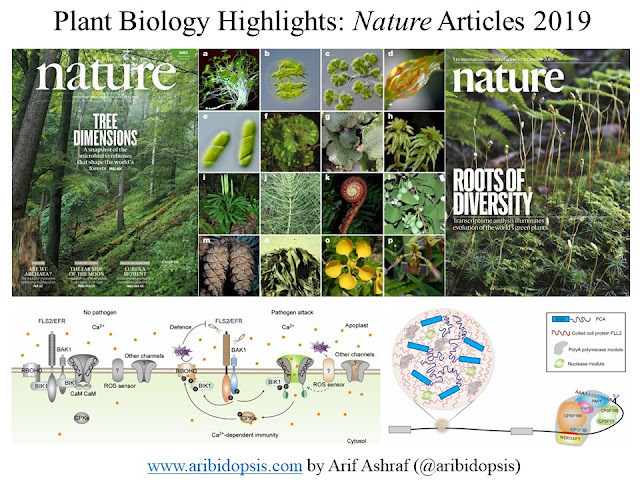Heirloom Tomatos: Taste to Genes
 As a tomato-holic, from salad to pizza, and plant biologist, it's obvious for me to write about tomatos in details. The initial question which drove me to find more about tomato was "taste". What makes it atrractive to me and to others tomato-lovers as well as. Let's take an overview on the chemical constituents which bring the taste. It's simple. Just sugars like glucose, fructose, citric acid, malic acids, ascorbic acids, and few volatile compounds. Volatile compounds are important here to consider. These volatile compounds are perceived by our taste bud. But, the concentration of these volatile compounds varies and the perception sensitivity of particular volatile compounds depends on individual. So, in non-scientific conclusion, the same tomato variety will not taste "best" to everyone. Scientifically speaking, individuals' senstivity to specific volatile compounds are dependent on our genetic make up. In addition, to sense a volatile compound, it needs to pass the thresold concentration of our perception. Sometimes low amount of a particular volatile compound may be sensed by our taste bud due to higher sensitivity.
As a tomato-holic, from salad to pizza, and plant biologist, it's obvious for me to write about tomatos in details. The initial question which drove me to find more about tomato was "taste". What makes it atrractive to me and to others tomato-lovers as well as. Let's take an overview on the chemical constituents which bring the taste. It's simple. Just sugars like glucose, fructose, citric acid, malic acids, ascorbic acids, and few volatile compounds. Volatile compounds are important here to consider. These volatile compounds are perceived by our taste bud. But, the concentration of these volatile compounds varies and the perception sensitivity of particular volatile compounds depends on individual. So, in non-scientific conclusion, the same tomato variety will not taste "best" to everyone. Scientifically speaking, individuals' senstivity to specific volatile compounds are dependent on our genetic make up. In addition, to sense a volatile compound, it needs to pass the thresold concentration of our perception. Sometimes low amount of a particular volatile compound may be sensed by our taste bud due to higher sensitivity.
One particular research has been drawn my attention. It's about "Heirloom tomatos". Heirloom plants are defined as an old cultivar that is still maintained by gardeners and farmers particularly in isolated or ethnic communities. These may have been commonly grown during earlier periods in human history, but are not used in modern large-scale agriculture. Professor Harry Klee's team from University of Florida investigates about the popularity of heirloom tomato varieties among people, responsible volatile compounds and required genes which are undispensable for producing particular volatile compounds through, mostly, enzymatic reactions. The following chart shows the rating (scoring method is ignored to keep the post simple. For curious readers, the link of original research article is provided below) of popularity of heriloom tomatos.
Variety
|
LIKING
|
Maglia Rosa Cherry
|
30.48
|
Garden Gem
|
28.52
|
Garden Gem
|
26.51
|
Early Red Chief
|
22.37
|
Super Sioux
|
21.29
|
St. Pierre
|
21.19
|
St. Pierre
|
20.70
|
Peron Sprayless
|
20.04
|
Yellow Jelly Bean
|
19.09
|
Maglia Rosa Cherry
|
18.94
|
Mexico Midget
|
18.46
|
Gulf State Market
|
17.68
|
Garden Treasure
|
16.79
|
Kentucky Beefsteak
|
16.69
|
Wisconsin 55
|
16.08
|
UF Secret 153
|
16.00
|
Three Sisters
|
15.99
|
Orange Queen
|
15.75
|
Bloody Butcher
|
15.68
|
Valencia
|
15.47
|
Three Sisters
|
15.45
|
Skorospelka Red
|
15.33
|
Yellow Perfection
|
15.11
|
Super Sioux
|
14.75
|
Garden Peach
|
14.62
|
Lemon Drop
|
13.94
|
Red Calabash
|
13.87
|
Clear Pink Slicer
|
13.78
|
Czech Bush Red
|
13.63
|
Red House Free Standing
|
12.53
|
Amish Salad
|
12.50
|
Wisconsin 55
|
12.43
|
Ailsa Craig
|
12.38
|
UF Secret 182
|
12.21
|
Green Zebra
|
11.35
|
St. Pierre
|
10.59
|
Bloody Butcher
|
10.23
|
Florida 47
|
10.14
|
Matina
|
9.36
|
Marmande VFA
|
8.27
|
Zapotec
|
7.89
|
Flora-Dade
|
7.63
|
Watermelon Beefsteak
|
7.49
|
Tigerella Orange
|
7.35
|
Martian Giant
|
7.27
|
LA1482
|
6.12
|
Matt's Wild Cherry
|
4.53
|
Research article: The Chemical InteractionsUnderlying Tomato Flavor Preferences
Heirloom definition: Wikipedia
Details about Professor Harry Klee's research: Klee lab




Comments
Post a Comment